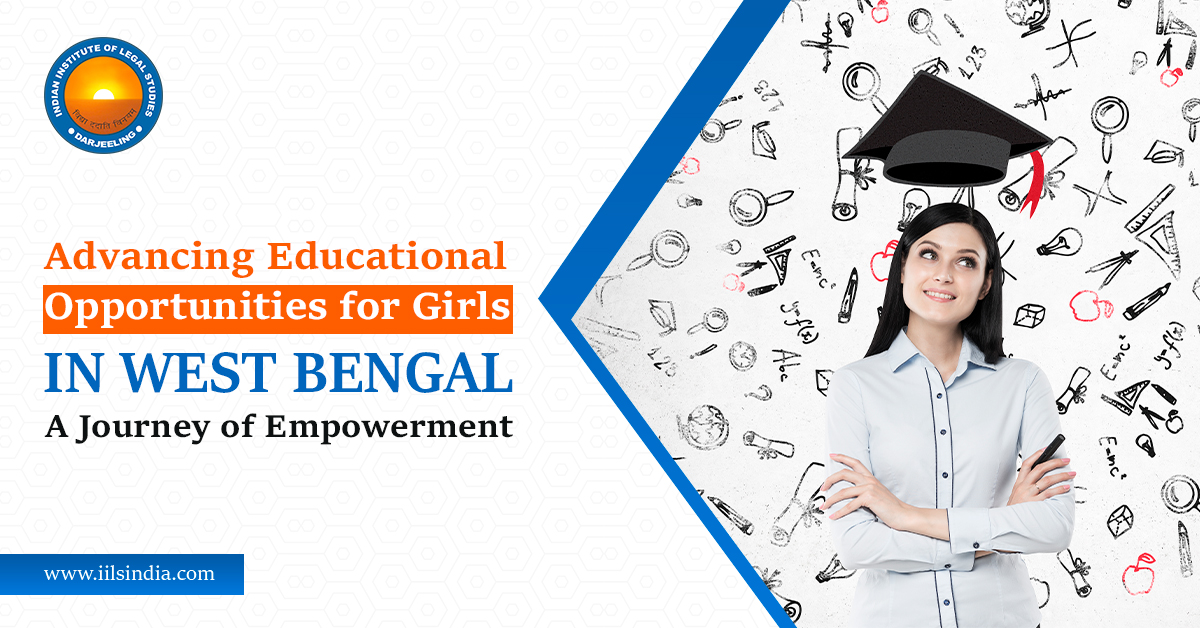Over the years, there has been a lot of attention paid to the advancement of education for girls in West Bengal. With a number of programmes and laws, the state has made great strides towards empowering females and advancing their education. To guarantee that every girl in the state receives an equal and high-quality education, however, there are still obstacles to overcome and ongoing efforts are needed. If a woman student is passionate about pursuing a profession in law or legal studies, law education in West Bengal can be an ideal choice.
The West Bengal government has put in place a number of programmes and policies to support girls’ education. One such programme is the “Kanyashree Prakalpa,” which seeks to elevate girls’ status and well-being by offering financial support and inducements to continue their education. A concentrated effort has been made to upgrade school facilities in order to give females a comfortable learning environment. This include building and renovating school buildings, giving girls’ restrooms apart, and making sure the campus is safe and secure. The enrollment of girls in schools has been actively encouraged by the state government, especially in rural areas. Parents have been encouraged to send their daughters to school and discouraged from marrying young through awareness programmes and incentives.
A number of incentives and scholarships have been developed to help with female children’s education. These consist of financial aid to pay additional educational costs, free textbooks, and waivers of the tuition charge. Vocational training programmes have been started in addition to traditional education to give girls the skills they need to become more employable and financially independent. The curriculum has been updated, teaching aids have been provided, and teacher-training programmes have all been implemented in an attempt to raise the standard of education provided to girls. The government has set up secure transit options in places where it is difficult for girls to get to school so that they can go on a regular basis.
There has been a focus on the use of technology in education, and initiatives have been taken to give girls, particularly those living in isolated and underprivileged areas, access to digital learning opportunities. Campaigns for public awareness have been launched to emphasise the value of girls’ education and to debunk common misconceptions and preconceptions that prevent them from attending school. Girls in the state now have better access to education thanks to partnerships between the public and private sectors.
Even with these encouraging advancements, a few issues still need to be resolved:
In many communities, social stigmas and deeply ingrained gender conventions can discourage parents from sending their daughters to school. While enrollment rates have increased, female dropout rates—particularly in secondary education—remain concerning. This problem may be exacerbated by elements including early marriage, financial hardship, and a lack of support. There are still differences in the quality of education between urban and rural communities, despite efforts to enhance it. Promoting girls’ education requires ensuring their safety and security, particularly during their transit to and from school. In certain places, girls’ access to digital education resources may be impacted by limited access to technology and digital infrastructure. In order to overcome these obstacles and advance girls’ education in West Bengal, it is imperative that focused policies be put into place, awareness be raised, and stakeholders collaborate with one another. Ensuring that girls have equal access to high-quality education and equipping them with knowledge and skills—particularly in legal study in West Bengal—can promote the growth of a progressive and inclusive society.

